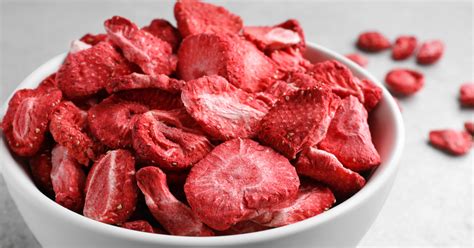Hi everyone! We’re back after another absence. Total Knee Replacement Surgery this time, and boy is the recovery period slow! I’m able to get around safely by myself now, and feeling more like myself.
Today I am switching the direction of my articles to something my husband and I were discussing this morning. We were talking about the nutritional value of freeze dried foods such as vegetables and MRE Meals. And I found some great news on this on the PubMed Central website at https://www.ncbi.nlm.nih.gov/pmc/articles/PMC7022254/! Freeze-drying is considered a high quality dehydration method for a couple of reasons, including:
- it operates at low temperatures, which contributes to preserving a product’s nutritional value, taste, appearance, and heat-sensitive compounds
- freezing inhibits chemical and microbiological processes, which significantly delays the product’s deterioration (thereby extending its shelf life)
The product is frozen first, then the water removed, preserving the nutritional value. So what does this translate to? Freeze-dried foods do maintain their nutritional value and are a great choice in foods to add to your personal food storage. This is going to be our next step. We are not sure if we want to do MRE Meals or purchase individual items such as fruit or vegetables. We will need to research the cost effectiveness of each and go from there.
What is the shelf life of freeze dried foods? Freeze dried meals (MREs) are good for up to 25 years of shelf life. #10 cans of freeze dried foods, such as strawberries, also have a shelf life of 25 years. To maximize the shelf life of freeze-dried foods, it’s important to store them properly. The ideal storage conditions for freeze-dried food are cool, dry, and dark. Temperature and humidity are the two most important factors to consider when storing freeze-dried food. Ideally, the food should be stored in a place with a temperature of 60 degrees Fahrenheit or lower and a humidity level of 10 percent or less. Exposure to light and air can also affect the shelf life of freeze-dried food, so it’s important to store it in airtight containers and in a dark place. This is going to need some solution solving on our part, as we live in the Midwest. Hot, humid summers would be detrimental to the storage of freeze dried food items! We may need to look into making a storage area in our small basement.
It’s also important to note that once you open a package of freeze-dried food, its shelf life will decrease significantly. Once the food is exposed to air and moisture, it will begin to degrade more quickly. To extend the shelf life of opened freeze-dried food, it’s important to transfer it to an airtight container and store it in a cool, dry, and dark place.
So now, on to doing one of my favorite things. Shop and compare! Will update on our progress in an upcoming article!

